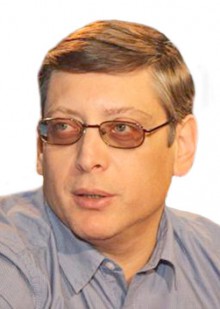My interlocutor is the famous historian Ihor Shchupak, director of the Tkuma Ukrainian Institute for Holocaust Studies and the Memory of the Jewish people and the Holocaust in Ukraine Museum. This unique museum was opened in Dnipro in 2012, in part thanks to the efforts of its director. “Of course, the focus is on the history of the Jewish people and the Holocaust,” Shchupak told us. “It is very important for us to study this tragedy. Therefore, I study the problem of Ukrainians saving Jews during the Holocaust, who are called ‘Righteous Among the Nations.’ This is the topic of my doctoral thesis.”
Besides, the historian is involved in book publishing and writing books and textbooks, which are used by up to a quarter of all Ukrainian school students. He serves on the Ukrainian-Polish and Ukrainian-German historical commissions, participates in working groups of the Ministry of Education and Science of Ukraine which deal with reforming historical education and new approaches to it. Shchupak co-authored new history curriculums and many other research and educational projects, in particular, atlases of the history of Ukraine. “I am now writing a textbook on interwar world history which addresses controversial issues, in particular, I touch on the Holocaust and the Holodomor in the context of comparing different genocides,” Shchupak said. It was this, as well as the partnership between Ukraine and Israel and the intersections of human fates in the historical context, which we talked about at the Tkuma Institute, which is located on the premises of the Menorah Jewish community center.
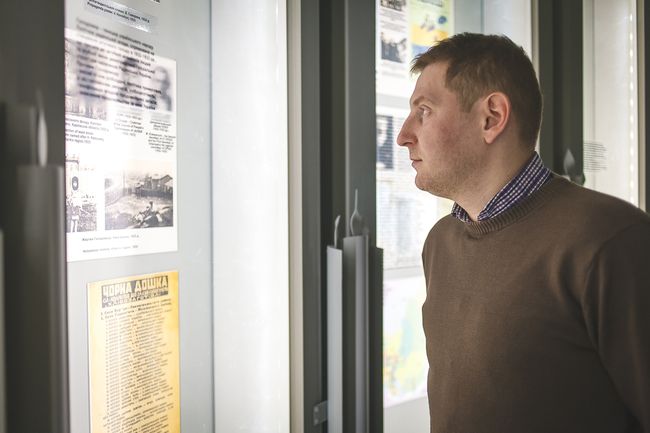
“MY AUNT, WHO IS ABOUT 90, STILL REMEMBERS WHICH PLANTS MAY BE EATEN AND WHICH MAY NOT”
Recently, member of the Israeli Knesset Akram Hasson introduced a bill on the recognition of the Holodomor as genocide of the Ukrainian people. Den/The Day newspaper has always paid much attention to this issue, starting long before it was raised at the state level during Viktor Yushchenko’s presidency. The famed researcher of the Holodomor James Mace worked for Den/The Day as well. What is your personal take on this problem?
“This question is directly related to my research work. I study the Holocaust, one of the worst genocides in the history of humanity. For this, it is important to understand what the genocide is in general, where this definition comes from and how it relates to other similar tragedies. Raphael Lemkin, a Polish lawyer of Jewish descent, began to study the mass extermination of people by researching the genocide of the Armenian people in the Ottoman Empire. After that, he studied the Ukrainian Holodomor and came to the realization that the genocide was a particularly tragic phenomenon, the most terrible one in the history of humanity. And when after World War Two Lemkin submitted documents to the newly constituted UN, he saw the Armenian tragedy, the Holodomor of the Ukrainian people, and the Holocaust as the classic examples of genocide. But the Soviet Union was among the victors in World War Two, and it could not let itself be condemned along with Nazi Germany for organizing mass genocides. Therefore, targeting social groups was excluded from the definition of genocide, limiting it to the destruction of a certain group of people based on racial, national, or religious criteria. In Ukraine, it was the Ukrainian peasantry, which actively opposed the Soviet government, that was destroyed. There was insurgent movement in many regions of Ukraine, which debunked the stereotype that Ukrainians were supposedly resigned to their fates. As for the Holodomor, we study it in the general context of genocide. After all, when talking about the Holocaust, we cannot avoid mentioning the Ukrainian Holodomor, or, for example, the deportation of the Crimean Tatars.
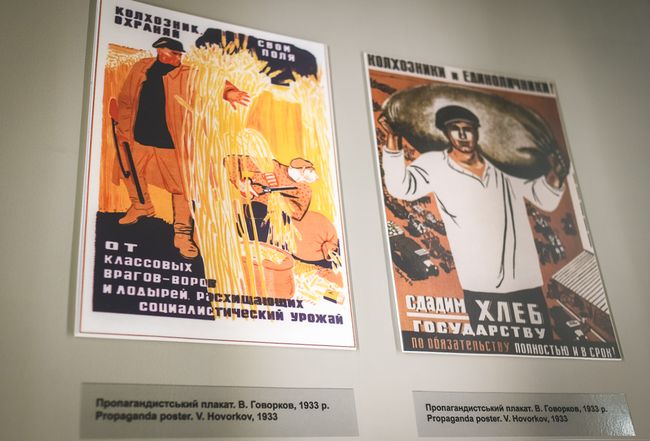
“By the way, our Crimean Tatar friends, who are historians and journalists, came to us a few days ago, and we opened an exhibition of photos of Crimean Tatar children whose parents are held as political prisoners in the annexed Crimea. And before that, we created the first permanent museum exhibition in Ukraine devoted to the deportation of Crimean Tatars and other peoples of Crimea.
“Of course, we felt we had to create a Holodomor exhibition in the Holocaust Museum. To do this, we turned to experts, including Doctor of Historical Sciences Liudmyla Hrynevych, who heads the Ukrainian Center for Holodomor Studies in Kyiv. We also sought help of our friends from Canada, for example, Valentyna Kuryliv, who was among the first people to introduce the Holodomor studies to educational institutions. We mention the Holodomor in various contexts.
“Here is my book The Holocaust in Ukraine: Finding Answers to History Questions, which is a textbook approved by the Ministry of Education and Science of Ukraine for use in educational institutions. It contains a separate section on the Holodomor, which took place on the eve of the Holocaust. There is a moral aspect to this problem as well. If we want to understand the Crimean Tatars, we must understand the Jews who perished during the Holocaust, and perceive the pain of Ukrainians who were killed en masse by starvation in 1932-33. ‘There is no alien pain’ is the motto which is a certain moral imperative, and we work according to it. And, as far as the victims of the Holodomor are concerned, then, of course, an overwhelming majority of those victims were ethnic Ukrainians. But I must say that there were other victims of the Holodomor as well. There were Russians, Poles, Belarusians, Tatars, Jews who resided in the areas affected by the famine. If you take the Jewish districts that were created in the 1920s and where the Jewish population was concentrated, there were victims there too. I know it not only from documents and books, but from my own family story as well. It is because my grandfather, my dad’s father, who lived in the village of Konetspol in the Pervomaisk raion of the Mykolaiv oblast, perished during the Holodomor, just like many of his relatives and friends. My aunt Sofia Shchupak, who is currently living in Israel, is about 90 and still remembers that terrible time. Surprisingly, she remembers which plants may be eaten and which may not. That is, an elderly person has this terrible story carved into her memory.
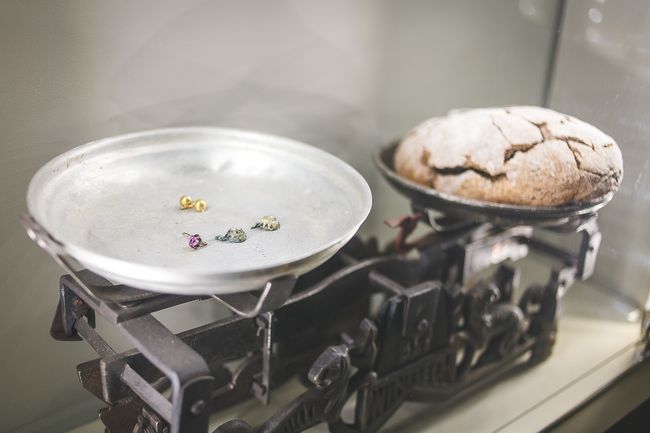
“Another such interesting moment: when I studied the history of the Holocaust, I interviewed Dora Teplytska, an elderly woman. She recalled that during the Holodomor, a Ukrainian boy crawled to them whose village was put on the ‘black board’ and had its grain completely confiscated. And the Jews saved this boy, settled him in an empty house. He lived there and was grateful to his saviors. And when the war began and the Nazis came, he really wanted to help them, but it was impossible. When the Jews were being led off to be executed, he asked, ‘What can I do for you?’ And one of the Jews said: ‘Remember our names!’ He took a notebook and began to record his fellow villagers, more than a hundred names in total. And then, when the Red Army returned, he was mobilized, fought in the war, and returned after getting wounded. The notebook was kept for several decades until it was handed over to a local teacher. And she later transferred it to the Tkuma Institute, and we transferred this list to Yad Vashem. It turned out that no other information was available on virtually all of the exterminated people on the list. When an entire family was destroyed, no one could preserve the memory of the dead. And it turns out that this Ukrainian did what he could by preserving the memory of his saviors.”
“THE COMMUNISM TRIAL MUST BE INTERNATIONAL”
Ukraine has passed a number of legislative acts on the recognition of the Holodomor of 1932-33 as genocide of the Ukrainian people. In January 2010, the Kyiv City Administrative Court’s ruling even named leaders of the All-Union Communist Party (Bolsheviks) as perpetrators of the Holodomor, although it then closed the case due to them being dead. But no full-fledged trial has been held in Ukraine, which would dot all the ‘i’s.
“You are saying right things. The fact is that a crime which does not get punished provokes its repetition. The world would be different and better if there was an immediate reaction to the destruction of one and a half million Armenians. The international community effectively overlooked it. The story of the Holodomor in Ukraine was also suppressed by the Soviet Union and even by a large part of the Western intelligentsia, which believed that an interesting experiment was being conducted in the USSR for the sake of the working people, and thus refused to see the fact that these workers were being destroyed by famine and repression. Was not it strange when famous writers and journalists came to Belomorkanal and did not understand who was building that canal? There were, of course, honest people who spoke the truth about what was happening, but they faced an unwilling audience. And this attitude regarding the mass destruction of people made possible further tragedies. Famous American historian Timothy Snyder and Ukrainian historian Yaroslav Hrytsak draw our attention to this.

“Holding the Nuremberg Trial and condemning Nazi criminals was very important regarding the Nazi ideology. In that trial, the court condemned crimes against humanity, including the particular policy of ‘the final solution to the Jewish question’ – the Holocaust, which is estimated to have killed about 6 million Jews. But there has been no trial of those responsible for the crimes of the communist regime of the USSR. Why is it so? I think that in 1991, when Ukraine gained independence, an overwhelming majority of the population still felt connected to the Soviet past, accepted Soviet history. And the political elite that came to power in Ukraine did not actually break with this Soviet past, but was directly connected with the communist system. Ukraine, ideologically and politically, was living in two worlds: on the one hand, it talked about its aspirations towards Europe and European values, and on the other, it strived for an alliance with Russia, which proclaimed itself the successor to the Soviet Union. And in fact, the abandonment of the Soviet legacy, of the totalitarian past, began in Ukraine only under president Yushchenko, who tried to embed memory of the Holodomor into the center of the national idea. This was fundamentally correct, but the methods used were not very popular and ineffective, and prompted many people to oppose it. It was because this often was done by Soviet methods, in particular, it was forced through the education system, which lacked proper training and methodological effort. Still, a major step in the formation of national memory was made, and Yushchenko’s role in it should be recognized.
“But in fact, the real abandonment of the Soviet past began in Ukraine only after 2014, after Russia began aggression against Ukraine, when it became clear that Russian thinking was effectively post-Soviet and represented an attempt to conserve ideological notions of the past, to prevent Ukraine and other post-Soviet countries from entering the modern world. De-communization, which began in Ukraine, with all its merits and flaws, was to tear us away from the Soviet past. However, the communism trial, targeting it as a criminal totalitarian system, must be international. Only then it will matter.”
“THE NATIONAL IDEA OF ISRAEL IS FORMED AROUND THE HISTORICAL MEMORY...”
So, why has such a trial not been held internationally? What are the obstacles?
“My opinion is that this, of course, should be done. But for any serious trial, we must have political preconditions met first. There has to be public demand for it. We must be aware that a large part of Ukrainian society still has Soviet or post-Soviet consciousness. And this is not only a part of the older generation, but also young communist perverts, if one can label them like this. Under these conditions, holding such a trial will lead to an even worse political crisis in Ukraine.

“If we compare it to what happened after World War Two, then an overwhelming majority of humanity saw clearly that the Nazism was an absolute evil; all humanity had fought the Nazism. The Nazism had then just suffered a catastrophe and a military defeat. Today, the post-Soviet ideology is actually defended by Russia. It is a mix of imperial, Bolshevik, and quasi-religious ideology, where communist ideas remain as methods of leadership, as methods of working with the masses and as methods of forming collective consciousness. Therefore, a new Nuremberg Trial will take place once global communism has had its 1945. So far, post-communist regimes have been preserved in Russia and effectively in Belarus, and their varieties exist in Central Asia. Do not forget about China either, and I am not even talking here about rogue regimes in North Korea and Cuba. In addition, intellectuals still play with left-wing slogans in the US, Canada, Europe, and Israel. They do not fully understand what communism is like, because they have never experienced life under the conditions of the communist regime. Unfortunately, you will find the psychological premises of the left-wing mentality among students and in the academic circles. It is alleged that Winston Churchill once said that ‘if you are not a revolutionary in your youth, you have no conscience, but if you are not a conservative when you are old, you have no brain.’ On the other hand, left-wing organizations are funded by Russia. There is a very strange situation emerging, where the left-wingers, who have strong positions in Germany, Hungary, France, are often entering alliances with the far-right.”
Perhaps this explains why recognition of Holodomor on the world stage is being a bit stalled?
“There is more to it: another reason is the ignorance of humanity. Ukraine is not yet a serious political player on the political scene, unlike Russia. People listen less to Ukraine, and in order for us to be heard better, we must be economically stronger, corruption-free, and militarily capable. And there are reasons of purely academic nature as well. A large number of Russian scholars try to downplay the socio-ethnic character of the Ukrainian Holodomor. It reminds me of how, during the Soviet era, they tried not to talk about the Jews as victims of the Holocaust. They said that the victims of Nazism were ‘Soviet people without regard to gender, age, and ethnicity.’ But it was actually on the contrary: during the Holodomor, the Ukrainian peasants were destroyed as the basis of the anti-communist movement in Ukraine. Unfortunately, there are still scholars and politicians who speculate on this by juggling numbers which are unsupported by any documentary evidence. But there are such scholars as Liudmyla Hrynevych and Stanislav Kulchytskyi, who can tell what really happened. But with regard to Israel, I am far from convinced that the relevant resolution of the Knesset on the recognition of the Holodomor as genocide will be adopted.”
Why do you think so?
“I see several reasons for it. The first one is that in Israel, it was decided at the political level long ago not to recognize any such event as genocide, be it the Armenian genocide, or the deportation of the Crimean Tatars, or the Holodomor. It is because that country’s national idea is formed around the historical memory, in particular that of the Holocaust, and any mention of other genocides is not always adequately perceived by historians and the political elite. True, leading Holocaust scholars such as Professor Yehuda Bauer, who once wrote about the uniqueness of the Holocaust, now say that it was unprecedented in scale, organization, and universality, thus recognizing that such tragedies happened before, and the same Armenian genocide or the Holodomor can be listed as ones which typologically were closest to the Holocaust. And, of course, there is still a certain conservative tradition among scholars in Israel.
Akram HASSON, a member of the Israeli Knesset: Three months ago, I was a guest of the Verkhovna Rada. I arrived in Kyiv as part of an Israeli parliamentary delegation. We met with members of the parliamentary Ukrainian-Israeli friendship association, it includes 130 members of the Rada. They invited me to visit the Museum of Holodomor. Not knowing what they were talking about, I agreed. I was the only member of our delegation who went there.
“For me, it was all new, and I decided that people should know what happened then. I began to study the issue, to find out what happened under Joseph Stalin in the Soviet Union, and I realized that they carried out a policy of deliberate killing by starvation. It had its rules, it involved soldiers and officials who were sent there. So, more than three million people died, and some believe that the true figure was about ten million.
“The Vatican has recognized these events as an act of genocide, and four former Soviet republics have done so as well. And it seems to me that the world must know about it. I am not a Ukrainian, not a new or an old returnee, I am not a Jew, so nobody can accuse me of having a special agenda. But I am a man who was brought up in the State of Israel, and my education does not allow me to perceive calmly such terrible things. (http://detaly.co.il)
“There is another reason: politics is the art of the possible. Despite the clear understanding of what the current Russian regime is, despite the fact that Russia actually supports the terrorist organizations that are fighting against Israel and against the democratic world, despite recent events and military support provided by Russia to the regime of Bashar Assad, Hezbollah, and Iranian terrorists, Israel is trying to keep at least a semblance of neutrality in its relations with Russia. It is because Israel exists under very difficult international conditions. This can be compared with the conditions in which modern Ukraine finds itself. A catastrophic worsening of relations with Russia, according to some politicians in Israel, can cause a very great harm. Obviously, not everyone is onboard with risky behavior. Much of the Israeli establishment understands the anti-Israeli and anti-Ukrainian nature of Russian policies, but given the above factors, I believe that the resolution we are discussing will not be passed by Israel.”
“WE MUST GET RID OF STEREOTYPES IN MUTUAL PERCEPTIONS”
But still, is the idea of recognizing the Holodomor as genocide present in Israel?
“Of course, and we spread it, we try to maintain a dialog with our fellow scholars. When saying ‘we,’ I mean Ukrainian scholars, the Jewish community of Dnipro, people who have contacts in Israel. What are the ways of spreading such ideas? Firstly, we do it through research. Secondly, it is done by involving Israelis – academics, politicians – in those processes that are taking place. These include museum exhibitions, academic conferences, archival work, and the declassification of documents. If we find interesting intersections of the fates of people during the Holodomor and the Holocaust, then this must also shape opinions in Israel in a certain way.
“I also want to say about the extraordinary effectiveness of totalitarian propaganda. The Nazi propaganda was the most effective one in human history. And now, Russian propaganda is its equal at least, and it is based on a huge financial resource. And within the framework of this propaganda, we find efforts to create or maintain certain stereotypes of perception when they spread the stereotype of the Ukrainian as an anti-Semite, pogromnik, and butcher. Meanwhile, the Pole is shown as an anti-Semite, traitor, and murderer. At the same time, other forces that are allied to Russia spread stereotypes about the Jews as both communist commissars and, at the same time, exploitative capitalists. We have seen a new myth about the ‘Kike-Banderaites’ emerging, although this idea is absolutely not new. One can see in our museum how they wrote once about the ‘union between the Trident and the Star of David.’
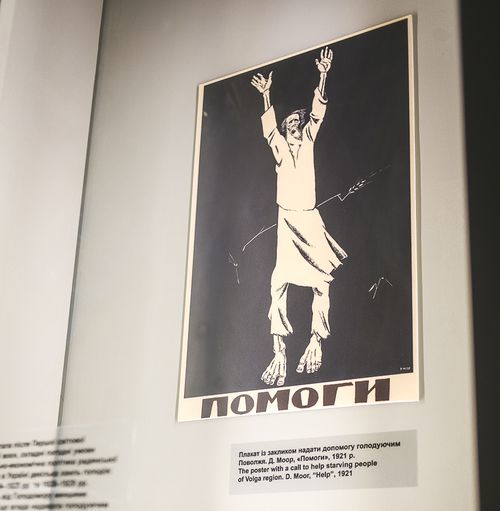
“We have to speak out against these stereotypical ideas, we have to talk about everything – Jewish commissars and Jewish organizers of the Holodomor as well as Jewish victims of the Holodomor – all the while realizing that Ukrainians were the principal victims. We must speak honestly about Ukrainian collaborators, those who betrayed Jews and participated in their extermination, including Ukrainian nationalists. But we must also talk about the Ukrainians who saved Jews while risking their own lives, the Righteous Among the Nations; Ukrainian nationalists from the Organization of Ukrainian Nationalists are among the Righteous who are officially recognized by Yad Vashem. We know that in western Ukraine, more Jews were saved by an order of magnitude than in a dozen regions in eastern and southern Ukraine. We must get rid of stereotypes in mutual perceptions. Therefore, we are introducing a critical look at our own history in our museum. No people has been ‘warm and fuzzy and sinless’ – neither Polish nor Jewish nor Ukrainian.”
What exactly do you tell about the Holodomor in your Holocaust museum?
“We have allocated to the Holodomor not a separate stand, but an entire room. The main idea is to show the Holodomor in the context of Soviet policies. Some people use the term ‘famine-making policies’ to show the preconditions of the Holodomor. They included the Stalinist policy in agriculture, the totalitarian system’s need to assert itself, including though the elimination of independent farms. We tell the story of the famine of 1921-22 when the Soviet state did not hide the famine and requested help. Although this food crisis was related not so much to natural causes, but rather to the policy of military communism and other idiotic communist experiments. We talk about the unknown famine of 1925, the famine of 1928, and collectivization, which created the conditions for the Holodomor, about the Holodomor of 1932-33, then about the famine of 1935 and subsequent events. Unfortunately, most of the population of this country does not know about the preconditions of the Holodomor as well as previous famines, and the fact that the Holodomor happened only once, in 1932-33. After all, before it, there were famines when thousands or tens of thousands of people died, but such a manmade extermination of millions of peasants in Ukraine had not happened ever, so we emphasize that the Holodomor was genocide of the Ukrainian people.”
“WE HAVE NATURAL DIRECTIONS OF COOPERATION WITH ISRAEL”
Editor-in-chief of our newspaper Larysa Ivshyna believes that should Israel recognize the Holodomor as genocide of the Ukrainian people, it could contribute to strategic cooperation between Israel and Ukraine.
“I think that strategic interests of countries are a prerequisite for strategic cooperation. History can contribute to this, but it can hinder it as well. For example, Ukraine and Poland are strategic partners in European politics and in opposition to Russian aggression. But Poland’s attitude to certain historical problems may interfere with our partnership. Although this does not undo the fact that Ukraine and Poland are natural strategic partners. The same applies to Ukraine and Israel: they are strategic partners both because they are not great powers, like the US or Britain, and because they have similar historical fates. I mean what happened to Israel after the proclamation of independence, and the environment in which Ukraine is defending its independence, and also interpersonal relations when we talk about a huge community of immigrants from Ukraine to Israel, who have been building modern Israel. I also mean the Jewish community in Ukraine, which has ties with Israel and consists of patriots of Ukraine. We have natural directions of cooperation in economic, scientific, and technology fields, etc. And the Israeli leadership will ultimately recognize the Holodomor as genocide, I believe in it. I am not convinced that this will happen now, but particular political elite, certain leaders recognizing certain things is one thing. Meanwhile, what we have to do at the level of society, what one has to do at one’s own level is a different matter. For instance, Metropolitan Andrei Sheptytsky, a spiritual leader of the Ukrainian people and, I believe, a national hero of Ukraine, saved more than 150 Jews during the Holocaust. He is not officially recognized as a Righteous Among the Nations in Israel, but people do see him as one. And the Hall of the Righteous in our Memory of the Jewish people and the Holocaust in Ukraine Museum includes an exhibition devoted to Metropolitan Sheptytsky. Incidentally, it is the first one of its kind in Ukraine, and it has opened precisely in a Jewish museum. And Metropolitan Sheptytsky is the main figure in that Hall of the Righteous, because we see him as a righteous man. And the same applies to the attitude of Jews and Israelis to the Holodomor as genocide, a terrible tragedy of the Ukrainian people, including those Jews who became victims of the Holodomor when they lived in Ukraine. That is, we need to work on the recognition of the Holodomor as genocide of the Ukrainian people, and it will happen at some point.”


